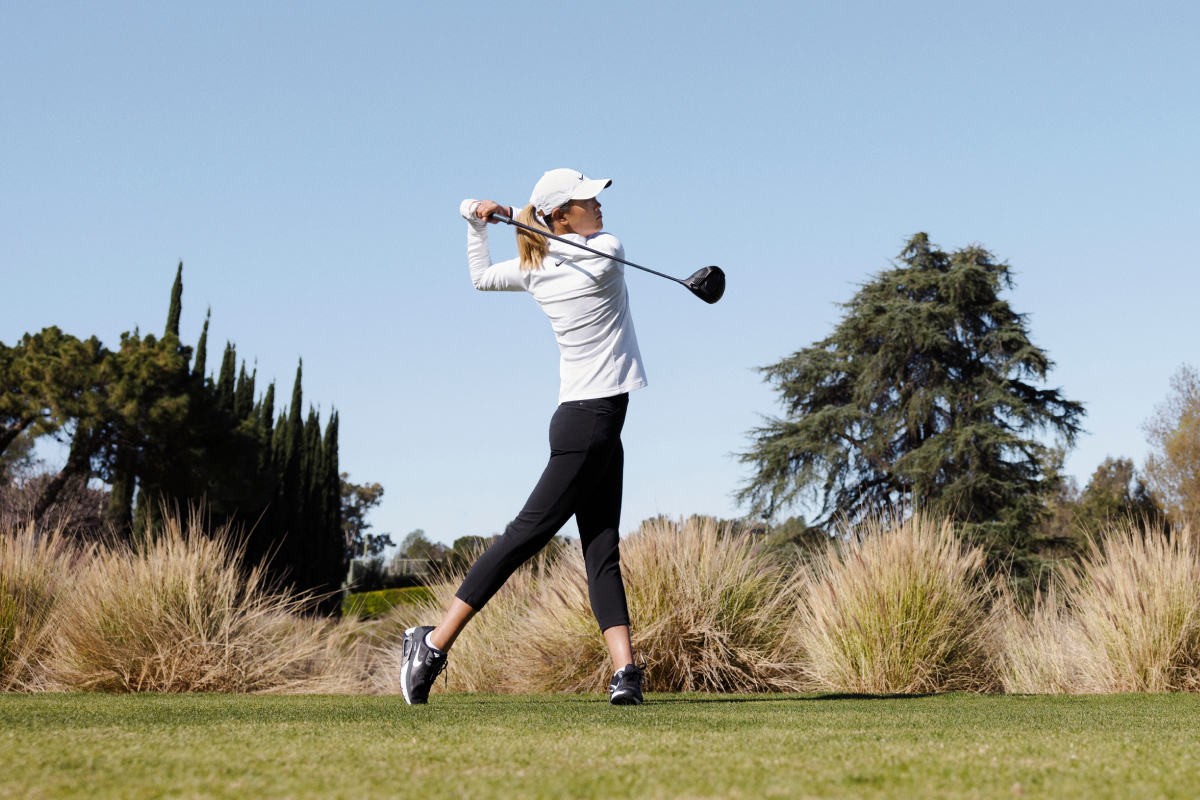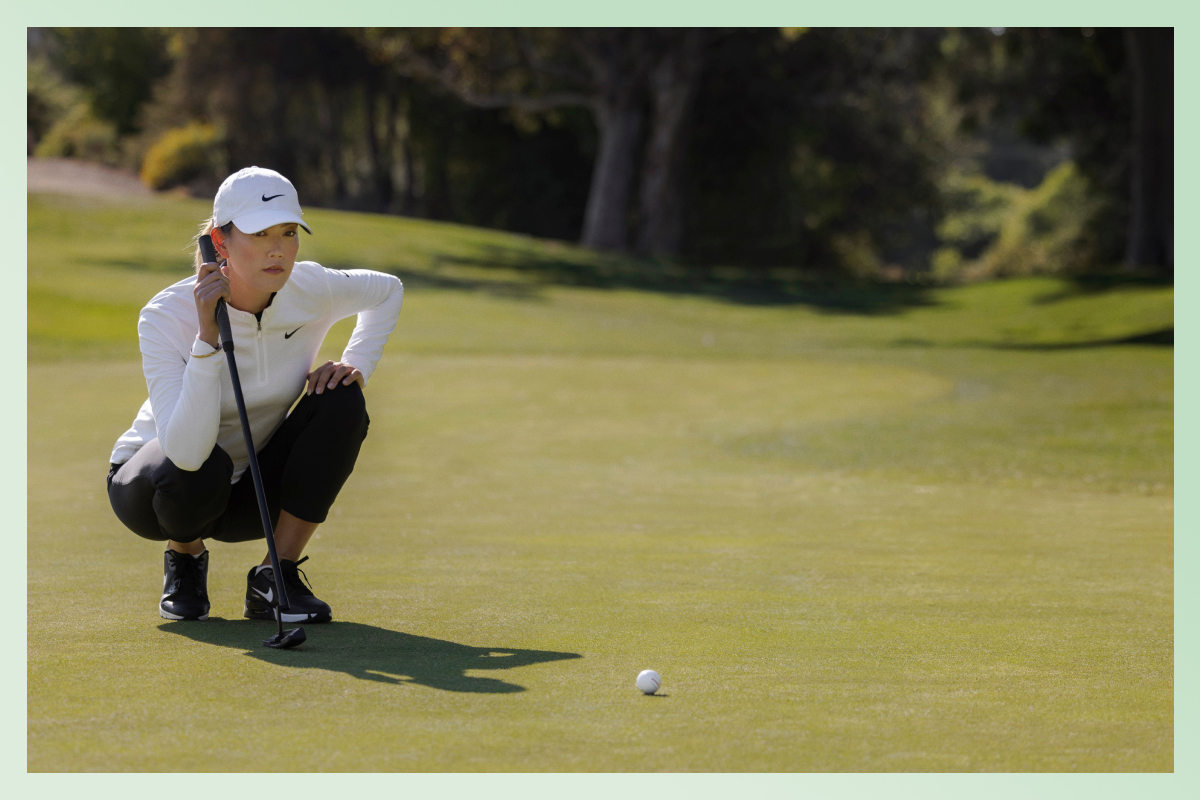Hit better shots and reduce injury risk by engaging the largest muscle group in your body.
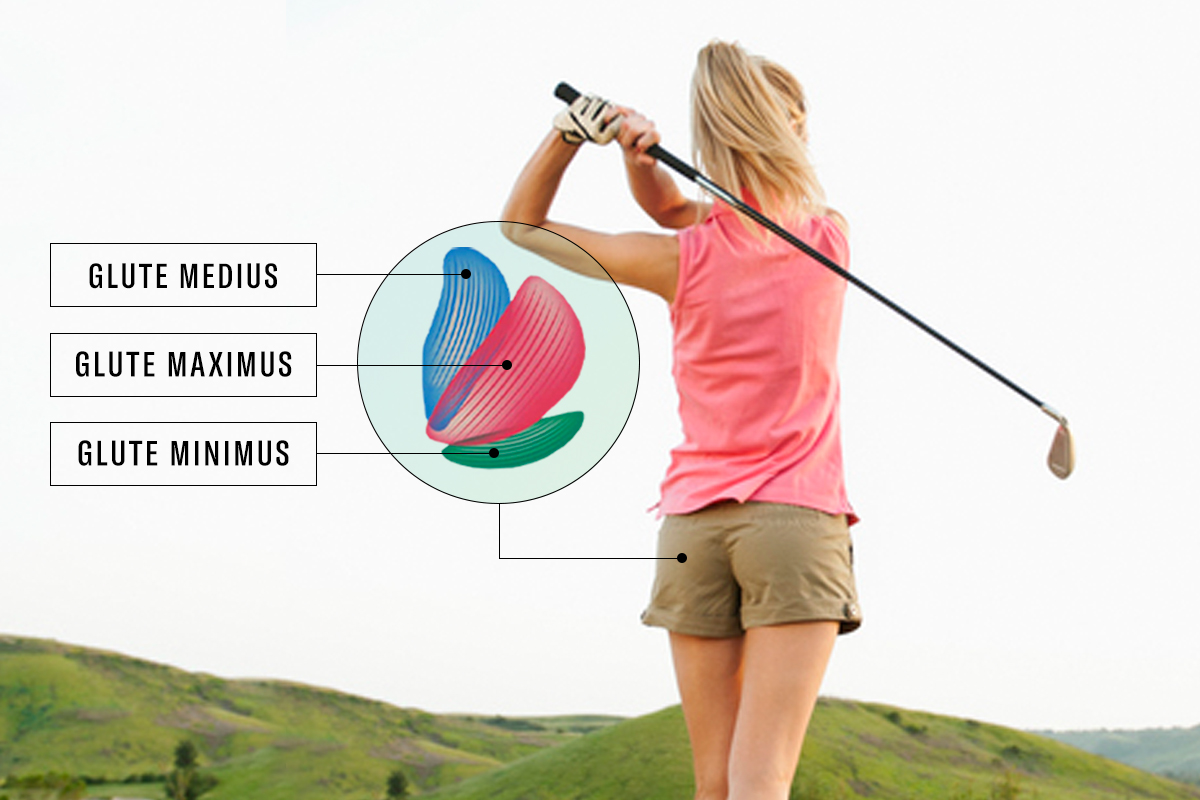
On the fog-delayed first day of the Farmers Insurance Open back in 2015, Tiger Woods withdrew from the tournament after his tee shot on the 12th hole. In a subsequent parking lot scrum with reporters, the most famous golfer in the world let it be known that his “glutes were shutting off,” causing intolerable back pain. The golf legend’s deactivated glutes certainly made him the butt of bad jokes, but any golf professional will tell you the glutes are arguably the most important muscle group for a solid golf swing.
Why? Because all three glute muscles—maximus, medius, and minimus—work together to stabilize the pelvis, preventing excessive lateral movement, known as sway or slide, during your backswing and downswing. This stabilization gives the upper body a firm foundation upon which to rotate. Without it, rotation is restricted; power is limited; and the body compensates to complete the movement and generate power. This ability to keep the lower body stable, in support of the upper body as it moves, is one of the biggest separators between high-handicap golfers and the elites, and it is all dependent on the glutes.
Are You Using Your Glutes?
California-based performance coach Milo Bryant, CSCS, is a Titleist Performance Institute certified trainer and instructor who works with athletes at all levels across sports. He was also named one of Golf Digest’s 50 Best Golf-Fitness Trainers in America for 2022. He says the vast majority of people who think they’re firing their glutes during exercise actually are not.
“I’ve worked with NFL linemen who can squat 600 pounds, but after a few simple assessments, it’s clear they’re not using their glutes to do it,” he says.
Bryant uses a simple test to determine whether or not an athlete’s glutes are properly engaging, and it’s one you can do at home. While in a glute bridge, with only the shoulder blades and the feet pressing into the floor and the hands extended up towards the ceiling, extend one leg while keeping the opposite foot planted and the pelvis level. “Many people get to that point, and the hamstring will immediately cramp up,” says Bryant. “It’s a sign they’re not using their glutes.”
Bryant further explains that if the strain in the planted leg is felt more in the hamstring (the back of the thigh) or the quadriceps (the front of the thigh), the glutes are not properly activating. And if you can’t hold that position with the leg extended for at least 30 seconds without the pelvis rotating or falling, your glutes are weak.
So What Happens If You’re Not Using Your Glutes?
If glute strength or endurance is limited, or if there is an imbalance from one side to the other, it can wreak havoc on both your swing and your body. Bryant points out that the only time during the golf swing that you have equal weight on both feet is at set up, when you’re not moving. “After that, you need glute stability on both sides, and if you don’t have it, you’ll have compensation, which can lead to pain and immobility,” he says. That’s what happened to Woods in 2015, when his deactivated glutes overtaxed the muscles of his lower back to stabilize his pelvis.
Glute issues can also result in two of the most common swing flaws facing golfers at every level: loss of posture and early extension.
- Early extension is defined as any forward movement of the lower body toward the golf ball during the downswing. This causes the arms and golf club to lag or “get stuck” behind the body during the downswing and forces the body to compensate by elevating the torso through the hitting zone.
- Loss of posture is defined as any significant alteration from your body’s original set up angles during your golf swing. Loss of posture wreaks havoc with the golf swing, affecting timing, balance, and rhythm.
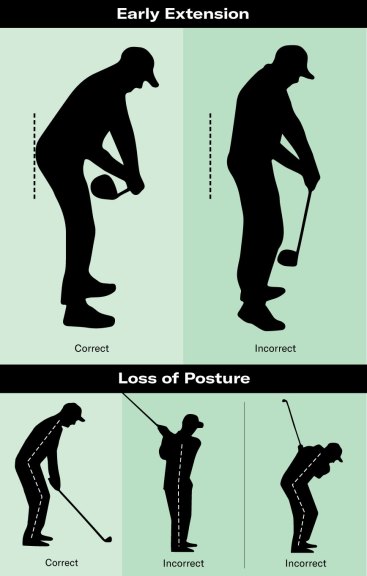
Both early extension and loss of posture cause the club face to be in an improper position at impact, resulting in two very common swing misses for right-handed golfers: the block to the right and the hook to the left.
How Do You Activate Your Glutes?
At Home
Bryant’s favorite exercise to activate the glutes is the single-leg hip thrust, which is beneficial for strength, balance, and mobility. “An overwhelming majority of athletic movements are done on one leg, with the hip and knee flexed to some extent,” says Bryant. “Done properly, and to the end range of motion, the single-leg hip thrust engages the glutes more than any other unilateral exercise.”
To perform the exercise, support your upper back on a bench with the right foot flat on the floor and the knee bent to 90 degrees. Lift the left leg off the floor until the knee is bent to 90 degrees. Engage the right glute muscles by pushing through your right heel to raise the hip to full extension. Hold for a few seconds at the top, squeezing the glutes, before slowly lowering back to the starting position. Swap legs and repeat.
Be mindful of keeping the trunk rigid throughout the movement so there is no flexion or extension of the spine. To scale the move, work on the single-leg glute bridge from Bryant’s assessment.
On Tonal, you can try a resisted barbell glute bridge with your shoulder blades pinned to the floor, instead of elevated on a bench, to zero in on your glutes.
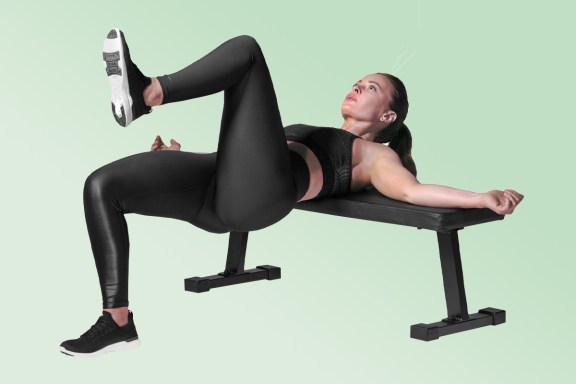
At the Tee
Next time you hit the range, actively squeeze your glutes during your swing to get the feel of the stability created by properly engaging your glutes. You’ll find you eliminate a lot of unnecessary movement and will feel more stable, with your chest over the ball and your shoulders properly rotated at impact. Your shots will straighten out, and you’ll be less likely to suffer from hip and back pain during and after your round.
And remember, this is an issue that affects golfers at all levels. Watch enough professional golf on television, and you’ll eventually see a pro golfer take a thumb and rapidly poke or massage his or her glutes as a tactile reminder to the brain that it should be activating those specific muscles. You can also do this when training your glutes with exercises such as bridges, lunges, and squats. Touch the glutes to remind the body to contract from that area rather than from the hamstring or quads.
“The brain is like water, in that it follows the path of least resistance,” Bryant explains. “If the glutes aren’t firing, it’ll fire something else. But if you literally hit the glutes, it provides a kind of proprioceptive wake-up call and can get that mind-muscle connection firing again.”
